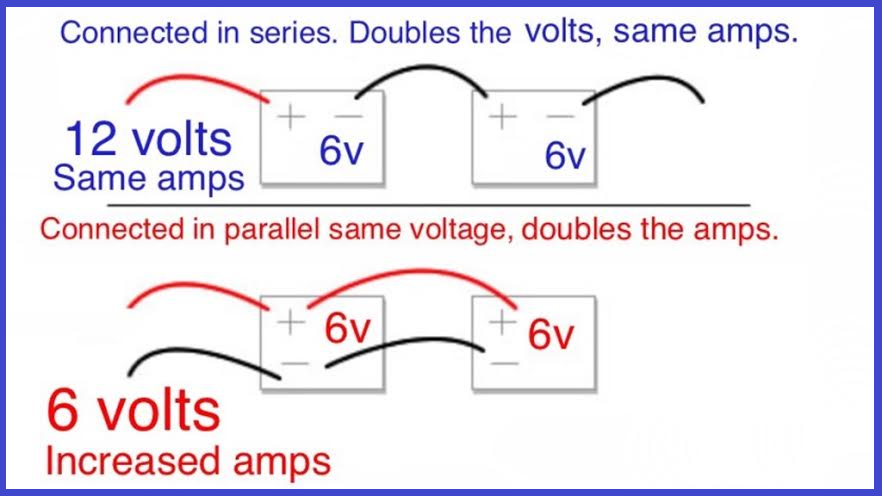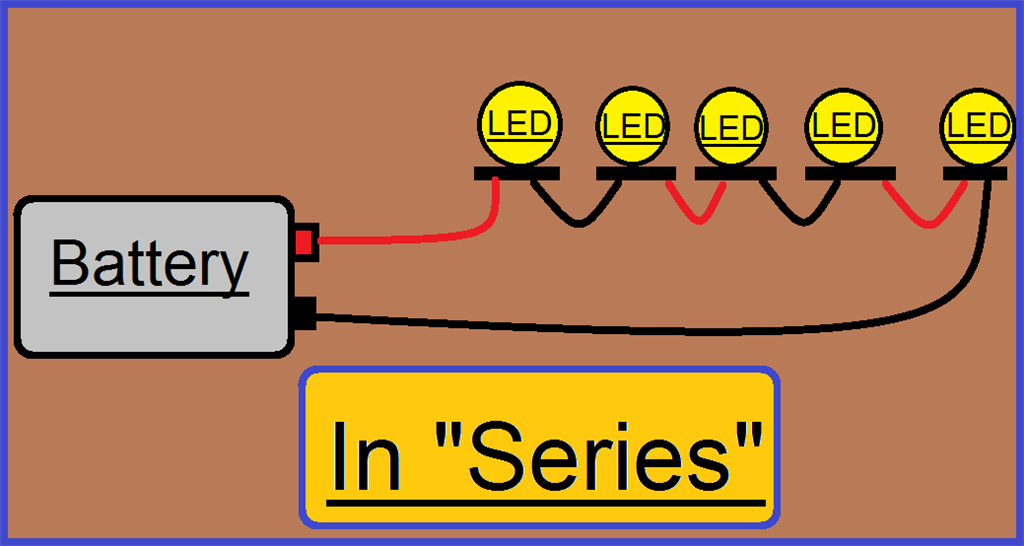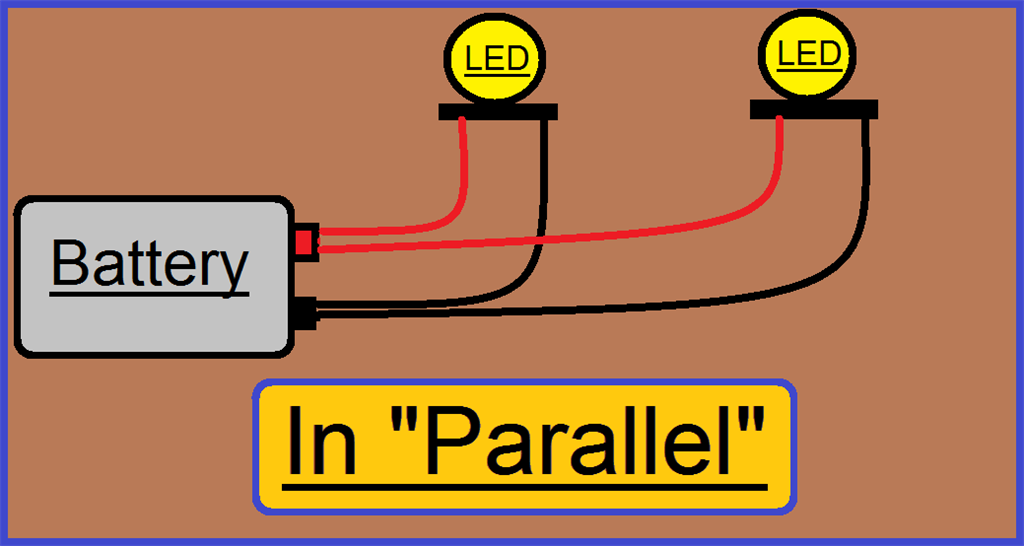Step 6. Series or Parallel.
Parallel increases current. Series increases voltage.
Something that can sometimes cause confusion, is the understanding of what "Parallel" and "Series" actually means. This step will explain exactly what they both mean, and what they do.
Series.
"Series", is where multiple devices are chained together, one after another. Think of when you watch your favorite TV show.
It has 24 episodes which play one after another. This makes a "series" of episodes.
In an electrical circuit, this could be a row of lights. Have a look at the image below for a visual example of these lights in "series"...
Battery packs that are made up of individual cells, and connected in series which adds each cells voltage together which increase the overall voltage.
Parallel.
Unlike a "series"'circuit, where one device is connected to another, a "parallel" circuit is where two or more devices connect to the same power source with their own wires.
Back to the TV. You have a TV and a video recorder plugged in to one power outlet, so they are both using the same power supply.
You watch your favorite movie on channel 1 on your TV (maybe your favorite robot movie), and record another movie on channel 2 on the video recorder.
The TV movie finishes before the one being recorded does. You put the TV on to standby and leave the video recorder on to finish recording.
Although they are being powered from the same power outlet, one device is off, but the other one is still on.
Connecting two batteries in parallel (both negative terminals connected together, both positive terminals connected together), to your robot, will not increase the overall voltage. What it will do though, is increase its run time (increasing the amp hours or milliamp hours). There will be more current on offer as well, but like was mentioned in step 1, an electrical device will only draw the current it needs.
A summery of "Series" & "Parallel".
A group of joggers run in single file (in series). The one in front falls over, and this effects the other joggers running behind. If one device fails, the others will stop operating. (Sorry, I can't draw joggers).
Another group of joggers run along side each other (in parallel). One falls over, but the others are not effected. If a device fails, the others will still operate.
Another reason to know the difference between "series" and "parallel", is when it comes to using a multi-meter to measure amps and voltage. That will be covered in the next step.






Thanks for this info. Still not sure why everything says it will handle 20plus servos because power wise, they cant. also a 20amp fuse will probably to blow before ez-b blows. this would be great in the specs!!
Thanks again
Scott
I'm not an expert, but there is common sense too.
Not all servos are equal: there are small torque and high torque servos, there are cheap servos (bad electronics, counterfeiter etc) and good servos (good engineering) and smart servos (with micro-controller e.g. Dynamixel with temperature, load, torque control).
Servos/motors have different current rates e.g. idle, torque stall, peak, inrush.
Some setups don't accommodate the Inrush/Peak current. Inrush Current is commonly used to describe the current that is required to energize an AC powered device when first applying voltage and power to it. If you have all your servos moving at same time you have a Inrush current during a brief period.
Some batteries have high discharges rates for example a lipo battery with 1000 mAh and a C=20 can handle 20 amps, but a niMH (AA) can't handle 20 Amps so the battery plays an important role.
And last not all fuses are equal there are quick-acting and time-lag (slow) a slow fuse can handle as much as 10 times the current for a brief period before blowing up...
Without knowing all details we can't make assumptions.
I recommend using EZ-Robot HDD digital servos for prototyping you product development, because they're the highest efficiency that you'll find. PTP is correct, in that your post may be assuming a specific servo experience, which is impossible to generalize. The EZ-B can provide power to entire InMoov large servo configurations. Even the EZ-Robot JD humanoid uses an EZ-B v4 and has 14 hdd servos and powers off a single 7.4v battery. This conversation of power requires explicit details of the hardware selected for your product development - as it cannot be generalized.
If you have questions regarding the EZ-B v4 manufactured by EZ-Robot, then you can visit their website at www.ez-robot.com to contact them directly. Otherwise, the opensource hardware and software for the EZ-B v4 design is available in the Synthian GitHub link at the footer of this website. Lastly, there's a number of supported hardware platforms for ARC in the Getting Started link on this website. Many options to ensure you experience positive results with your product development.